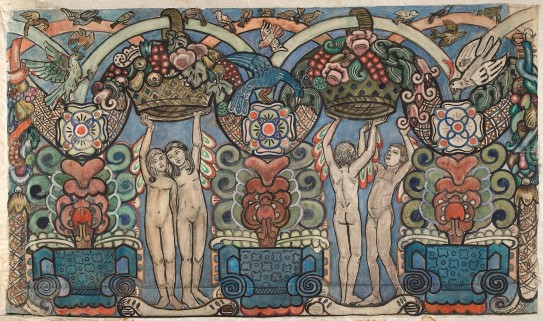Art in everything

Transcription
Øivind Storm Bjerke:
This is a room that I find particularly interesting.
Narrator:
You are listening to Øivind Storm Bjerke, professor of art history at the University of Oslo.
Øivind Storm Bjerke:
In this room, there’s one work that’s the key to understanding everything else in the room. That work is Oluf Wold-Torne’s decorative frieze, a watercolour dating from 1918. It incorporates elements that are extremely traditional: rose painting and designs from traditional domestic crafts. And Norwegian artists at that time, in the eighteen-nineties and the early twentieth century, were in a way rediscovering the art of rose painting, which is a traditional folk art in Norway. And they legitimized this folk art by treating it not as something backwards-looking or nostalgic, but as something that they could incorporate into their modern or modernistic art.
Narrator:
In England at this time, the Arts & Crafts movement was well established and the role of the artist within the decorative arts was a subject of intense debate in Europe, including here in Norway.
Øivind Storm Bjerke:
Should the person who conceived the work also make the final, physical version? Or should a craftsman be engaged, or perhaps it should be put into industrial production? In this room, we see examples of all of these approaches.
The decorative frieze was intended as a wall-painting, of course, and we can imagine how the room where the frieze was installed would have been furnished ideally with furniture designed by Wold-Torne himself. The table would have been laid with tableware designed by Wold-Torne in collaboration with the porcelain manufacturers Egersund Fayance or Porsgrunn Porselen. Even the knife you used might have been artistically designed by Wold-Torne, and ideally also the ceiling and wall mouldings along with everything else, perhaps even the windows, in the form of stained-glass paintings, designed by the same artist.
In other words, the idea that a single artist would be responsible for the design of the whole room and everything inside it was the ideal result of the type of artistic endeavour represented by Wold-Torne.